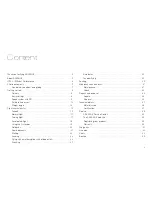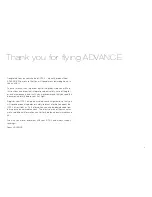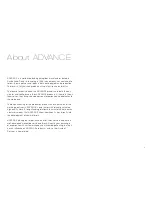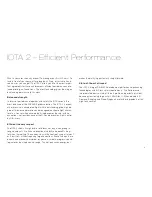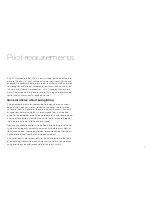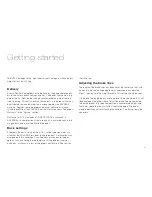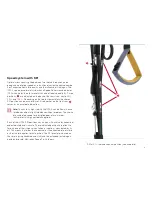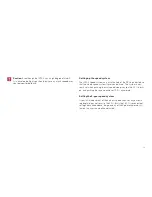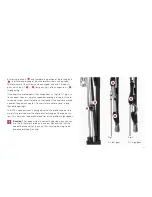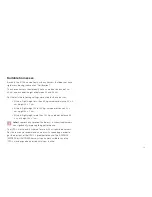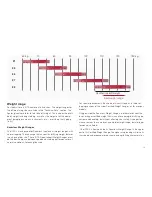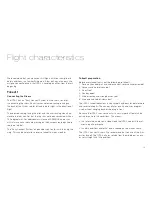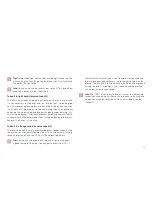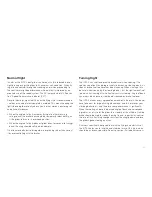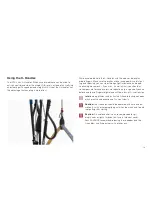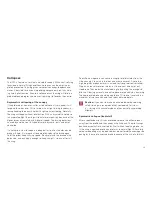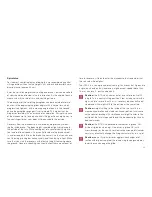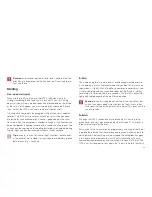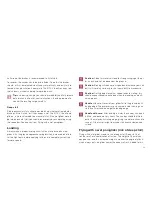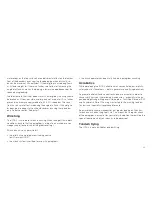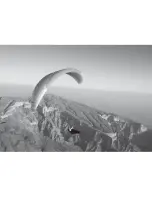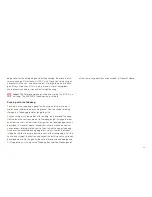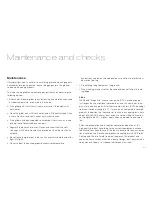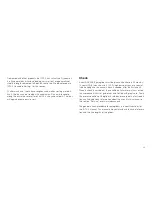
Normal flight
In calm air the IOTA 2 best glide is achieved with fully released brakes .
Light braking brings the glider to its minimum sink condition . When fly-
ing into a headwind, through descending air, or when proceeding to
the next thermal, glide performance will be distinctly improved by ap-
propriate use of the speed system . The SPI helps you do this . See sec-
tion
“
Speed-Performance-Indicator ( SPI )
”
.
Despite the wing’s high stability an active flying style is recommended
– collapses can be almost completely avoided . This means keeping the
lightly-braked glider directly above you, in other words, countering roll
and pitch disturbances .
§
When the angle of attack increases ( flying into a thermal; wing
swings back ) the brake lines should be temporarily released fully, un-
til the glider returns to its overhead position .
§
When the angle of attack reduces ( glider dives forwards, pilot swings
back ) the wing should briefly be braked more . .
It is often more efficient to disregard minor pitching rather than correct
it by overcontrolling with the brakes .
Turning flight
The IOTA 2 has short and precise brake travel when steering . It re-
sponds very directly and progressively to increasing steering inputs, as
soon as brake line free travel has been taken up When starting a turn
be careful how you apply the steering brake – just the right amount; not
too much . Active weight shift effectively assists steering . Angle of bank
can always be increased, stabilised or reduced by brake line load .
The IOTA 2 makes a very agreeable companion in thermals . You do not
have to correct for large pitching movements, and this improves your
climbing behaviour – and therefore your performance – significantly .
When thermalling, choose the desired angle of bank and correspond-
ing radius, and try to let the glider turn steadily at this attitude . Outside
brake should be used to steady the wing tip and, in particular, control
the rate of turn . Anything stronger will slow the wingtip down and lose
the glider’s good steering qualities .
A harness specifically designed to match the flying characteristics of
the IOTA 2 helps you to initialise and stabilise turns of this type, which
should be as even as possible . See also section «Suitable harnesses» .
17
Summary of Contents for IOTA2
Page 1: ...Edition 1 12_2017 Manual...
Page 2: ......
Page 14: ...14...
Page 26: ...26...
Page 27: ...27...
Page 28: ...28...
Page 34: ...parts and dispose of the lines canopy and risers in a waste incinera tion plant 34...
Page 38: ...38...
Page 41: ...Wing parts Winglet Upper surface Cleaning velcro Ribs Lower surface Air inlets Cells 41...
Page 44: ...Bowline 44...

